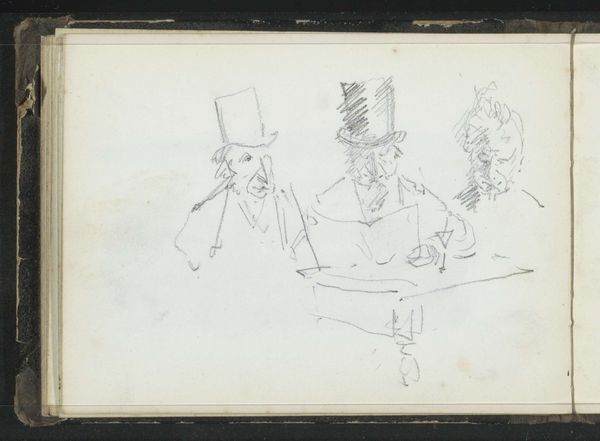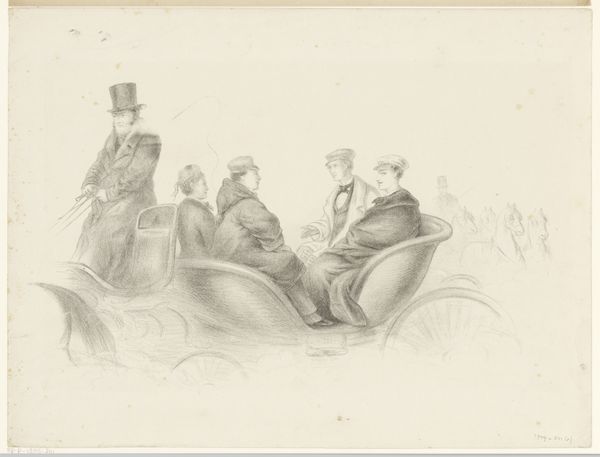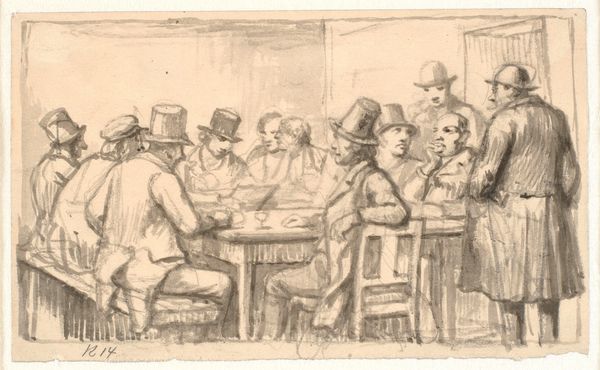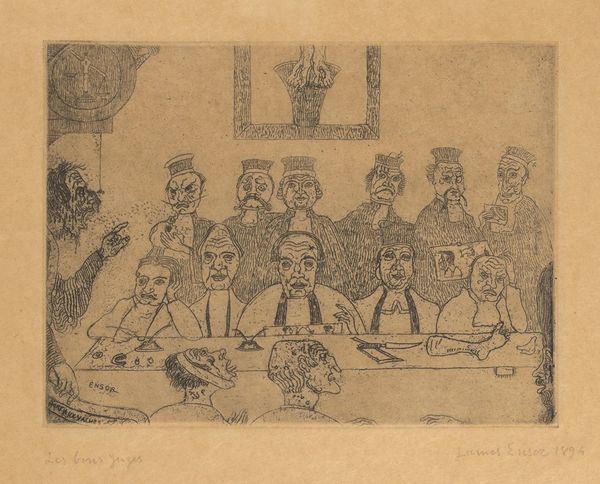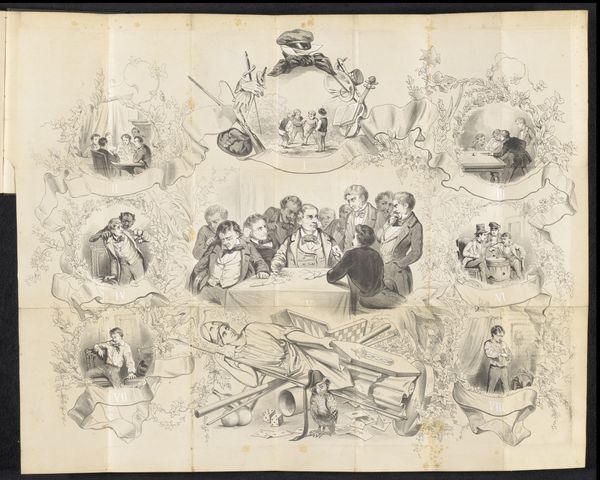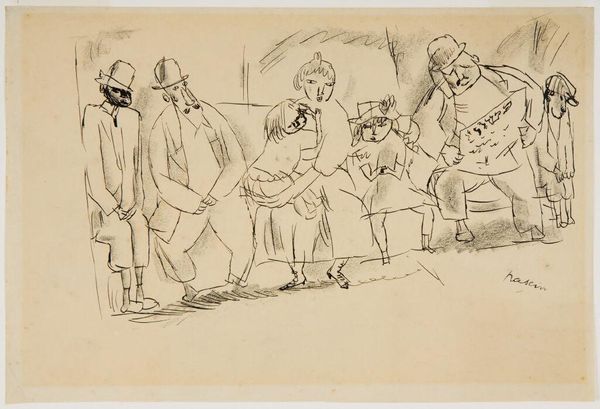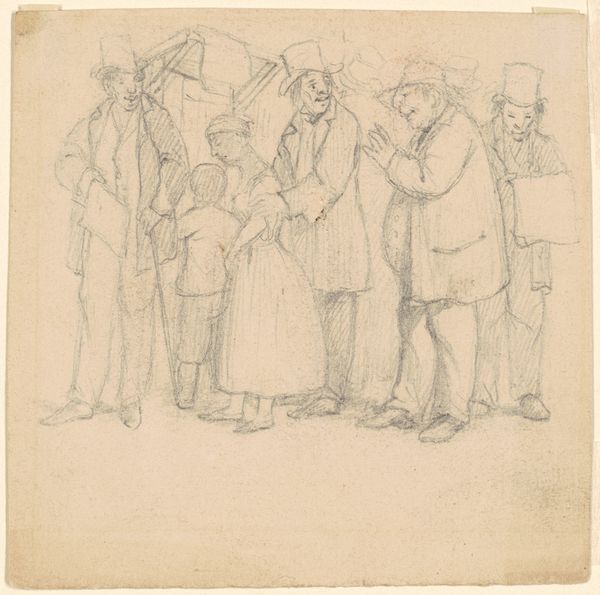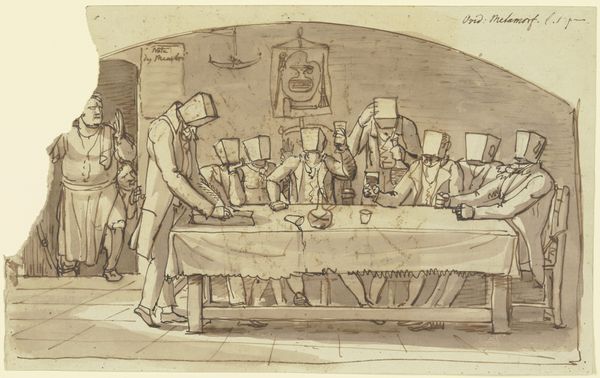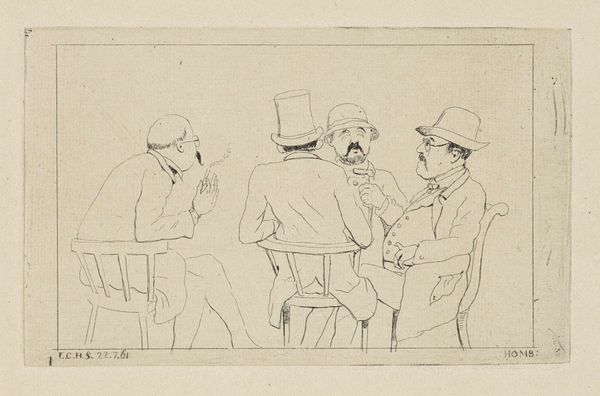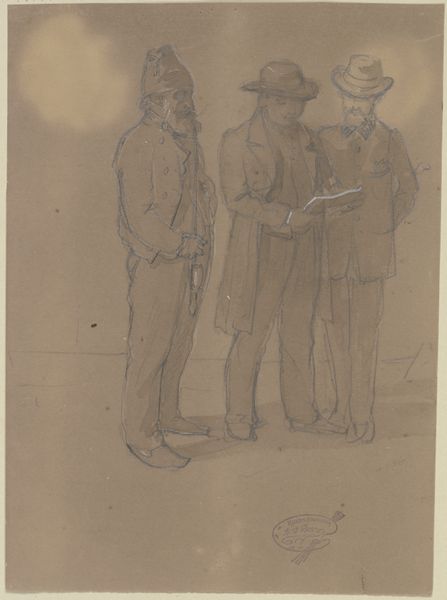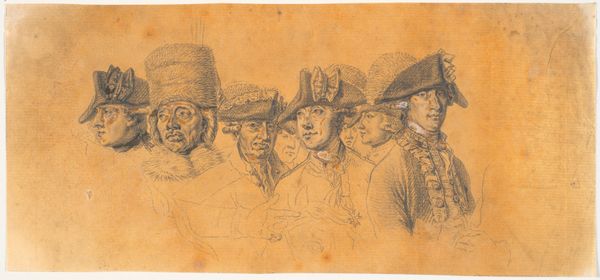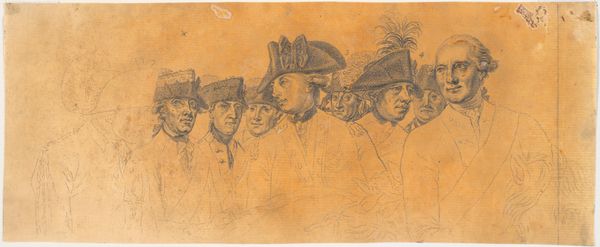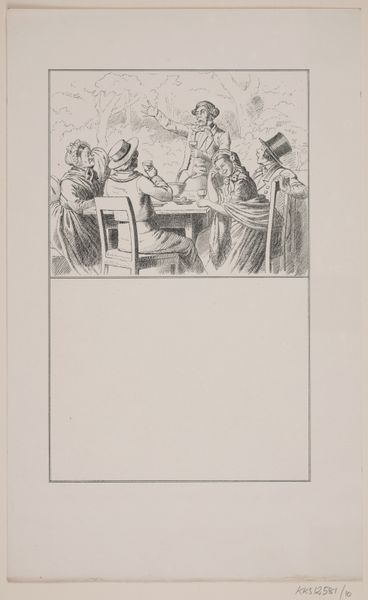
drawing, pencil
#
portrait
#
drawing
#
impressionism
#
caricature
#
pencil
Dimensions: height 140 mm, width 232 mm
Copyright: Rijks Museum: Open Domain
Editor: So, here we have Johan Michaël Schmidt Crans’s "Schets voor spotprent met dertien koppen met hoeden", a pencil drawing from the late 19th century. It's striking how each face is individualized despite the quick strokes. They're like a collection of characters waiting for a story. What kind of narrative do you think this drawing is hinting at? Curator: Well, looking at this drawing, I’m immediately thinking about the political and social climate of the time. Caricature was a potent tool for social commentary. Notice how each hat signifies a specific class or profession. The variety isn’t just aesthetic; it’s likely a commentary on the social hierarchy, a visual representation of the different strata of society brought together. What I wonder is, how does the act of grouping these figures affect their individual identities? Editor: That's fascinating! I hadn't thought about the hats as class markers so explicitly. It does seem like they're meant to represent a range of people. The grouping definitely emphasizes their differences and, perhaps, a certain tension or unease among them. Does the fact that it is a “Schets” – a sketch – tell us anything about the artwork's cultural importance or public role? Curator: Absolutely. A sketch often implies something unfinished, a work in progress. It provides us access to the artist's thought process, unfiltered. The public role becomes even more complex; it's a behind-the-scenes look at what could become a more finished, potentially published, caricature with political implications. It also raises the question: Who was the intended audience? And how might the message shift depending on the viewer? Editor: It’s amazing how a simple sketch can hold so much social commentary. Seeing the class markers within the sketch really shifts the work into another context. Curator: Exactly! It really exemplifies how art serves as both a reflection and a critique of society. Recognizing this transforms our experience when we encounter such work.
Comments
No comments
Be the first to comment and join the conversation on the ultimate creative platform.
